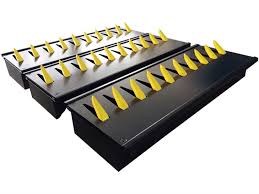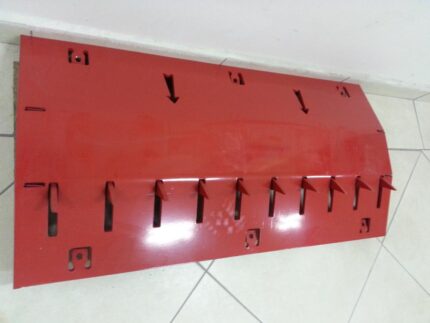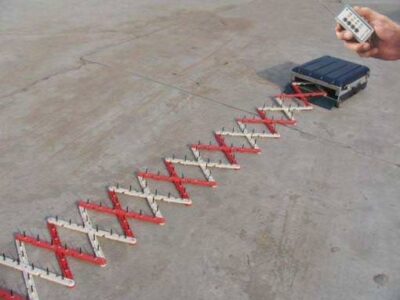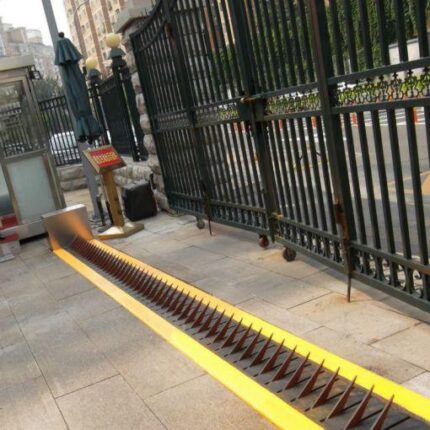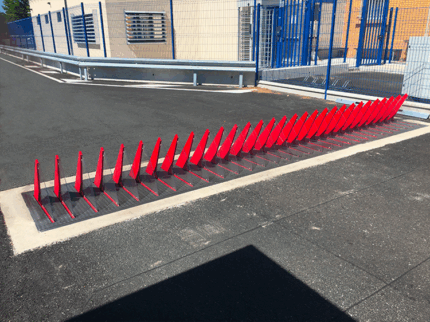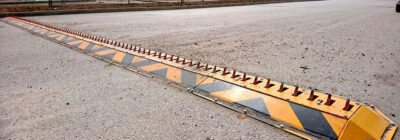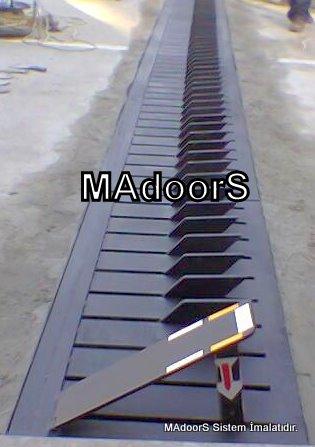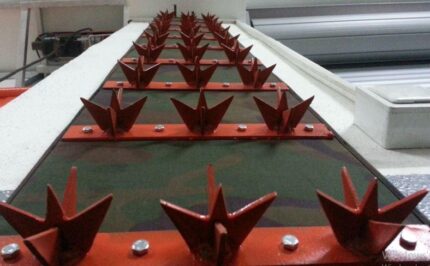Embedded Type Mechanic Spike Barrier
Mechanical Spike Barrier General Description
Mechanical Tyre Killer is one of the highest security vehicle access control systems. The Mechanical Manual Tire Killer provides high security for sensitive areas (banks, military bases, airports, embassies etc) against forced and unauthorized entry or exit of motor vehicles. Mechanical tyre killer’s each tooth works individually and lowers to the ground as the vehicle passes over with the vehicle’s weight. After the vehicle’s tyres pass over, the teeth raise up to its default position automatically. If an attempt to pass through the tyre killer from the opposite side is made, tyres of the unauthorized vehicle will definitely be destroyed immediately, therefore the vehicle moves only a few more meters and is inactivated. With the help of a mechanism, namely Latch Down Mechanism (optional), attached to the mechanical tyre killer, the teeth of the tyre killer is locked all together at lowered position when desired. The hardened teeth with a full-length of 32cm stand 10cm above the ground level normally. Each tooth is manufactured from 10 mm steel plates and they are attached to the same 16mm diameter hardened steel rod. Each tooth works individually. Mechanical lowering mechanism (Latch Down Mechanism) is placed to one end of the Spike Barrier and it stands below the ground level. It is a complete assembly with the body. Consequently, both manual drive of motion for all of the teeth and minimum effect of external factors to the mechanism are achieved.
Mechanical spiked passage blockers of the Tire killers series can be installed over the road surface or at a small depth in the road surface. Rubber humps that work as “speed bumps” can be mounted on the model that is installed over the road surface. Mechanical Tyre killer is available in two versions with spring and lever drive. In the first version, the spikes are directional and block the movement in one direction only, in the opposite direction the spikes are lowered by the tires of a car running over them.
With a lever-driven version, we have three options of operation: the spikes are raised and block movement in two directions; the spikes are lowered and locked; the spikes are raised in one direction, leaving the second direction free for movement.


